|
|
 Jen Jen |
 |
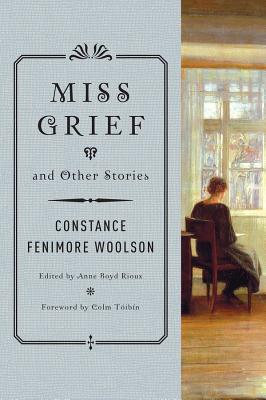
|
|
Miss Grief and Other Stories
Constance Fenimore Woolson
Tim recently introduced me to the work of an author I’d never heard of, and I bet you haven’t either—Constance Fenimore Woolson. And yes, there’s a Fenimore connection—she was James Cooper Fenimore’s niece. Woolson was a contemporary of Henry James and, in fact, during their lifetimes, Woolson was considered to be the more successful writer.
Tim loaned me his copy of Miss Grief and Other Stories, a collection of Woolson’s short stories. The foreword to the collection was written by writer Colm Toibin (I later learned that Toibin’s historical novel, The Master, focuses on Henry James and includes bits about his friendship with Woolson) and the introduction was written by Anne Boyd Rioux. She was previously unknown to me, but undoubtedly is the expert on all things Woolson. I’ll admit that when it comes to forewords and introductions, I’m a bit of a skimmer……. But what Toibin and Rioux had to say about Woolson, really a mini-biography, was fascinating. By the time I’d finished reading them, I was really hoping I was going to like Woolson’s writing after becoming so interested in her life!Woolson did not disappoint. Her writing is beautiful and her stories are complex and riveting. 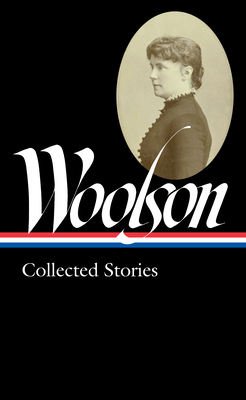 You can’t read them too quickly or you’ll miss a lot. My favorite story so far is Rodman the Keeper, a story about ex-Colonel John Rodman who is now the keeper of a national cemetery.He takes the job very seriously. By chance, he discovers a neighbor in dire need of medical attention. Despite the neighbor being a southerner (remember how divided the country was in the 1800s), Rodman takes him in and cares for him. Issues of patriotism, neighborliness, race, and class are all packed into this gem of a story. By the time I had finished Rodman the Keeper, I had ordered my own copy of Woolson’s work, the much more comprehensive Constance Fenimore Woolson: Collected Stories. You can’t read them too quickly or you’ll miss a lot. My favorite story so far is Rodman the Keeper, a story about ex-Colonel John Rodman who is now the keeper of a national cemetery.He takes the job very seriously. By chance, he discovers a neighbor in dire need of medical attention. Despite the neighbor being a southerner (remember how divided the country was in the 1800s), Rodman takes him in and cares for him. Issues of patriotism, neighborliness, race, and class are all packed into this gem of a story. By the time I had finished Rodman the Keeper, I had ordered my own copy of Woolson’s work, the much more comprehensive Constance Fenimore Woolson: Collected Stories.
|
| |
|
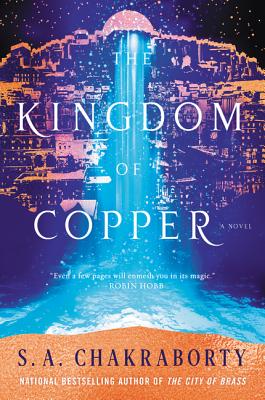
|
|
The Kingdom of Copper
S.A. Chakraborty
I’m nearly done with book 2 in the Daevabad Trilogy, a middle Eastern fantasy trilogy. When Kingdom of Copper opens, Nahri has been married 5 years and Ali has been exiled. Nahri discovers an abandoned hospital and decides to take on the task of restoring it.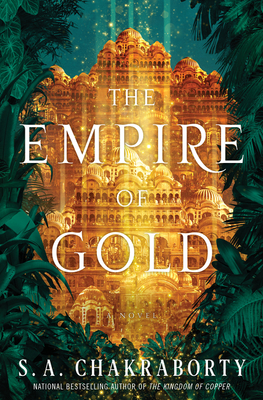 Not only that, she plans to welcome, treat, and learn from all the races, not just the prestigious or acceptable races. I hate to say too much and give away the plot, but this is a series I’m so glad to be reading! Next up is definitely the 3rd book in the trilogy, The Empire of Gold. Not only that, she plans to welcome, treat, and learn from all the races, not just the prestigious or acceptable races. I hate to say too much and give away the plot, but this is a series I’m so glad to be reading! Next up is definitely the 3rd book in the trilogy, The Empire of Gold.
|
| |
|
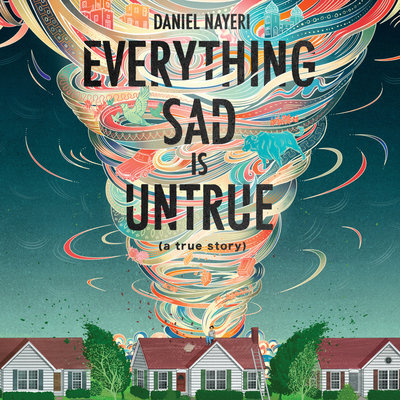
|
|
Everything Sad is Untrue
Daniel Nayeri, on libro.fm.
I’ve been listening to Everything Sad is Untrue on libro.fm. This middle grade (or is it?) novel is about a kid from Iran, growing up in Oklahoma. Daniel is overweight and self-conscious about his family/appearance/culture. He shares all kinds of Middle Eastern folklore as well as his own family’s history, which his classmates dismiss as made-up. 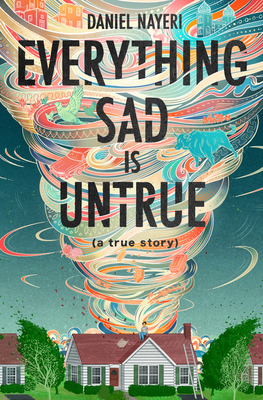 Daniel’s family is complicated—his dad still lives in Iran, and his mom has married a man named Ray, who has been abusive in the past. One of the funniest passages I’ve ever read is in this book—Daniel and his dad are on the phone and his dad is trying to explain why a particular Iranian pun is funny. I was so entertained by the passage that I played it for my husband later and he got a good laugh from it, too. The audiobook is read by the author, and he’s a great reader—it’s really adding to my enjoyment of the story. This book is featured in our Holiday Catalog! Daniel’s family is complicated—his dad still lives in Iran, and his mom has married a man named Ray, who has been abusive in the past. One of the funniest passages I’ve ever read is in this book—Daniel and his dad are on the phone and his dad is trying to explain why a particular Iranian pun is funny. I was so entertained by the passage that I played it for my husband later and he got a good laugh from it, too. The audiobook is read by the author, and he’s a great reader—it’s really adding to my enjoyment of the story. This book is featured in our Holiday Catalog!
|
|
|
|
|
|
 Sally Sally |
|

|
 |
The Land
Thomas Maltman
The cold winter of 1999 in northern Minnesota is foreboding, filling the reader with apprehension about what is to come. This sense is so strong that the winter can nearly be considered a character in the novel. The narrator, Lucien Swenson, may or may not be reliable. Several months earlier, Lucien was in a horrendous car accident. He had to drop out of college to recover, and he suffers from debilitating migraines and constant pain. At the same time, he’s anxious to find Maura, a woman with whom he had an affair. She apparently disappeared the night of his accident, along with $5,000 from the bank where they both worked. Lucien falls into a job as the caretaker for the home of snowbirds, conveniently close to the white supremacist church, The Rose of Sharon, where Maura’s husband serves as pastor. The plot of the book is complicated, and the cast of characters large. I’d forgotten the mania around the Y2K scare, and the belief of some that there would be an apocalypse at the end of the millennium, but it’s an important part of the plot, as members of the Rose of Sharon church prepare to capitalize on the mayhem to begin a race war. Lucien reflected on the events of that winter several years later, but still with a strong sense that he had “walked with angels and demons.” The Land is a spiritual quest for meaning, an exploration of excruciating loneliness, and a story about a time when it seemed life as we know it would change.
|
| |
|
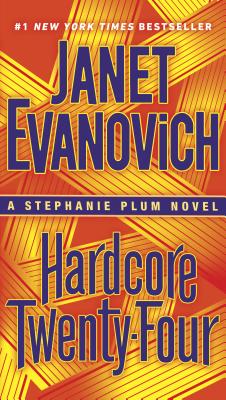
|
|
Hardcore Twenty-Four
Janet Evanovich
I haven’t chewed gum since an unfortunate incident in biology class soon after I got braces, but there’s particular kind of bubble gum that I enjoy. Huh? It’s the series of mysteries featuring Stephanie Plum, a hapless bounty hunter in New Jersey. Enjoyment of this series is dependent on total suspension of disbelief. Stephanie is surrounded by a familiar cast of characters: her out-of-control grandmother whose social life revolves around attending reviewals, and she literally drives her daughter to drink; Lulu a reformed ‘ho whose wardrobe stretches spandex past its limit, and Ranger and Morelli who provide the love interests, and are a constant tension in Stephanie’s life. Oh, and there’s Rex, the hamster. Each book in this series provides laughter and a total break from reality.
|
| |
|
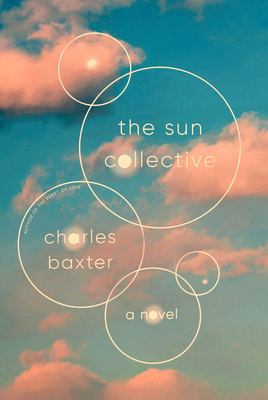
|
|
The Sun Collective
Charles Baxter
I have to start by saying that I’m a sucker for books set in Minneapolis, my hometown, as this book is. I enjoy recognizing locations and walking through them through the eyes of a gifted writer like Baxter.
There are several primary characters in the novel. Harold is a retired bridge designer. Alma is his wife and, after experiencing what must be a TIA (mini-stroke) she begins to have conversations with their pets, a cat and a dog. Their son, Timothy, is an actor who disappeared several months ago, but both Harold and Alma feel he’s close by. Ludlow belongs to an activist group called The Sun Collective, housed in a former church building and Christina, whose life lacks meaning and focus, regularly takes Blue Telephone, a designer hallucinogenic.
These characters go about their lives in a political situation similar to our own, and in a society struggling with acts of violence.
The book explores what draws us together, what gives us hope, what unsettles us, makes us feel guilty and fearful. As Alma says to Christina, “There’s no real hiding, you know.” The book offers satirical—and searing—social commentary as well as showing the drama inherent in a particular family. And it’s beautifully written. Also, did I mention that it’s set in Minneapolis?
Note: this book will be released November 17.
|
| |
|
|
|
|
|
|

Ann |
|
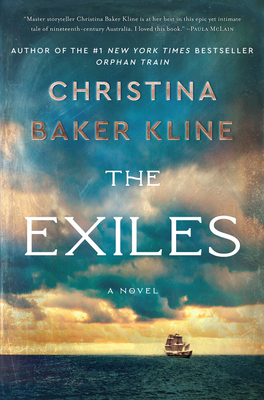 |
|
The Exiles
Christina Baker-Kline
Between the years 1788 and 1868, over 160,000 convicts were transported from England, Ireland, Scotland, and Wales to the penal colonies of Australia. The offenses leading to conviction were often unfair or of minor significance. The Exiles is a work of historical fiction focusing on the lives of Evangeline, Hazel, and Mathinna, three women whose lives were changed forever by this system. In the case of Mathinna, The Exiles also addresses the history of the Indigenous people and culture of Australia. The novel is a story of injustice, danger, love, and resilience. Once I started reading The Exiles, I could not put it down.
|
| |
|
|
|
|
|

Bob |
|
|
|
|
| |
|

Where's Bob?
This month his reviews are in Youth Yak.
|
| |
|
|
|
|
|

Gail |
|
 |
|
|
| |
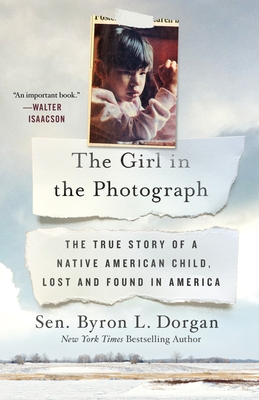
|
|
The Girl in the Photograph
Byron L. Dorgan
Senator Dorgan of North Dakota sees a picture of a small Native American girl with a tear running down her face. The headline reads: “Foster Home Children Beaten. Nobody's Helping.” The picture tears at his heart and thus begins a long career of doing what he can to better the plight of Native Americans. As he tells the story of Tamara, he also describes the nearly two centuries of shameful treatment of the First Americans, much of which continues today. Included are the stories of the Black Hills, the Dakota Access Pipeline, and conditions on the reservations. This is a wake-up call book about things happening in our own back yard!
|
| |
|
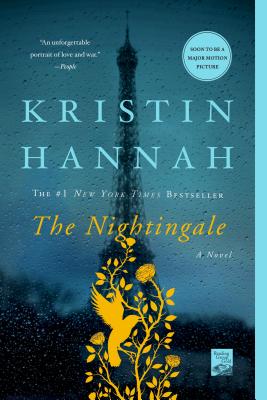
|
|
The Nightingale
Kristin Hannah
The author gives us the women's war in this epic story of World War II. It is the story of two sisters separated by years and experience, each taking a different and dangerous path to survival in German-occupied war-torn France. Isabelle joins the French resistance leading downed RAF and American flyers across the mountains to Spain and safety. Vianne stays in her home with daughter Sophia, trying to survive with food rationing and bitter cold winters. Life becomes nearly unbearable when a German Commander moves in and takes over a bedroom, expecting to be taken care of. This is a heart pounding story and an unforgettable portrait of love and war. |
| |
|
|
|
|
|

Hannah |
|
 |
|
|
|

|
|
Jack
Marilynne Robinson
I fell in love with Jack on the second page. When I finished reading the book (slowly, it isn’t a book to rush through), I went back to the beginning and reread the first 79 pages. Then I read the first chapter again. I have loved all of the Gilead novels, but this is the first since the original book Gilead that I can’t pass on to my family as I need to have it in my permanent collection.
If you want more detail about the content, Sally’s review of Jack is an excellent summary. I agree with her that it’s timel. I will only add that for me this a much more meaningful book on white privilege than the non-fiction books trending now.
|
| |
|
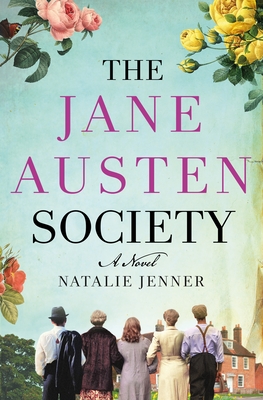
|
|
The Jane Austen Society
Natalie Jenner
Jane Austen did much of her writing in a “cottage” (a rather large house actually) in Chawton, a tiny, quaint English village. In The Jane Austen Society a small group of unlikely (but thoroughly likeable) lovers of Jane Austen’s books come together after WWII to try to convert her home to a museum. There’s romance, a will that’s a modern version of male entailments, a rotter threatening the success of the enterprise, a mansion still owned by the Knight family (Austen’s brother actually was adopted by the Knights) with an incredible library, and lots of quotations and references to Austin’s characters. It got me to think about her novels in new ways: I picked up my old copy of Emma to see how it will feel after reading Jenner’s novel.
A funny coincidence: while I was reading this book a friend sent me a link to an article about the actual Jane Austen House Museum. The places in the book are all actual, but the characters and the way they came together to establish the museum are fiction. But it did happen in the same time period, and the actual story is also remarkable. The article is about the financial challenges the museum now faces. The museum website is impressive: it's fun to visit after reading the book. |
| |
|

|
|
Emma
Jane Austen
The characters in Jane Austen Society talk about how every time they read the Austen novels they pick up new things, so I wondered if I would, too. I’ve seen so many adaptations: Clueless, Gwyneth Paltrow’s Emma, and others, that I thought I had everything down pat. However, once I started to read it was newly clear to me that comparing the movies to the novel is like comparing soda pop to a fine wine. The characters, dialog, and plot do lend themselves to dramatization, but it’s what happens between these elements that make Austen so very special.
Some of the characters in The Jane Austen Society love Elizabeth Bennet but really don’t admire Emma as a person, and others are fonder of Emma than Lizzy. I find myself in the Lizzy camp, but it’s quite interesting reading Emma with this question in mind.
|
| |
|
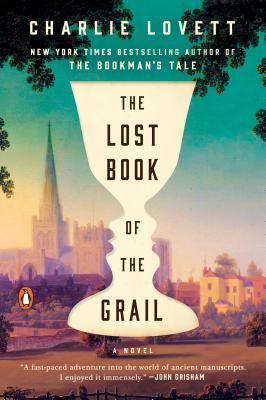
|
|
The Lost Book of the Grail
Charlie Lovett
This book is a marvel. We go back and forth between 2016 and various times in history to trace mysteries. It’s a bit like The Da Vinci Code with time travel and no violence. But the setting for The Lost Book doesn’t exist! It’s audacious, like writing a realistic novel in the Shire or Oz.
Barchester is an English county created by Trollope in a series of novels. There are some enjoyable references to Trollope’s Barchester, but you don’t need to be familiar with it to enjoy The Lost Book: Lovett brings Barchester to vivid life.
The book opens in World War II when the Barchester cathedral is bombed. A choir boy, helping to save the most valuable books, sees a mysterious man steal one ancient manuscript. Then we come to 2016 and a rather nerdy professor, Arthur, who loves the town and, especially, the cathedral and its library. Arthur was told when he was a child that The Grail is in Barchester, that he will find it someday, and that he must never tell anyone.
The complicated structure and charming characters lend themselves to theological discussion and to exploring values in a non-preachy way. Lovett’s love of liturgical music resonates through.
I sought out The Lost Book after enjoying two other novels by Lovett, one featuring Jane Austen and the other Shakespeare. When I saw the title of The Lost Book of the Grail I expected it to be about someone like Thomas Malory. When I started reading and realized that it’s set in Trollope’s Barchester, I put the Lovett book aside and read the long series of Barchester novels, which I loved. This took weeks. It was lovely to me. It did add to my reading this Lovett story, but it wasn’t really necessary.
|
| |
|
|
|
|
|
| |
|
|
|
|

Tim
|
|
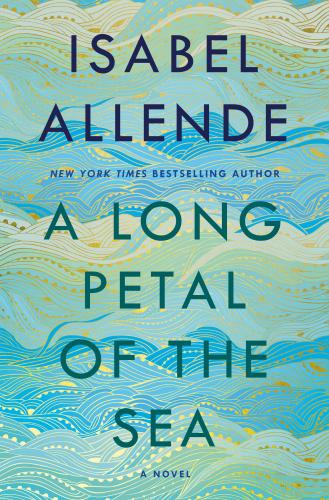
|
|
A Long Petal of the Sea
Isabelle Allende
Allende begins her novel in the midst of the Spanish Civil War, one of my favorite interests. A young couple meet and, over the course of the war, their relationship deepens as the Republican cause declines into defeat. The couple escapes and emigrates to Chile, in South America. Petal of the Sea (referring to the shape of Chile, long and indeed shaped like the petal of a flower along the lower western coast of South America) combines both history and a good story, following the political history of both Europe and Chile. If you like reading something that is entertaining and extremely well written while based in factual history, this might just be the book for you. Yesterday, as I was trying to decide how I might best approach this book recommendation, I was mulling in my mind how I might relate it to contemporary events. In the midst of the MPR hourly news, one of the news topics was the upheaval in Chile, as the population is forcing the government to re-write portions of their constitution. The present document was written by the dictator Augusto Pinochet, in the early 1970’s. You see, it’s all related.
|
| |
|

|
|
Cathedral
Ben Hopkins
If you enjoy books by Ken Follett or Umberto Eco, think about giving Ben Hopkin’s Cathedral a look. Hopkins sets the story in a town in Germany, Hagensburg, during the 13th century. You’ll get a good deal of history along with a thoughtful story. I should admit I didn’t have a clear understanding about all the conflicts, both religious and political, in central Europe at this time, so this book went a long way towards filling me in on what was going on. This is the perfect Winter Read!!! Learn about the conflicts between the Clerical and Noble aristocracy, as they begin to lose power to the more affluent merchant class asserting its power in growing towns. If you’re a history buff, this book is like candy.
Additionally, Europa Editions (the publisher) has committed to bring to the English reading public, authors whose work has heretofore been unavailable in English. This is a perfect reason to give their publications some attention. It might be a whole lot better for all of us if we were able to read more work being published in other languages.
Note: because of the pandemic, the release of this book, originally scheduled for last August, has been moved to January 26, 2001. It may be preordered.
|
| |
|
|
|
|
|
| |
|
|
|
|
Guest Review by Laura
|
|
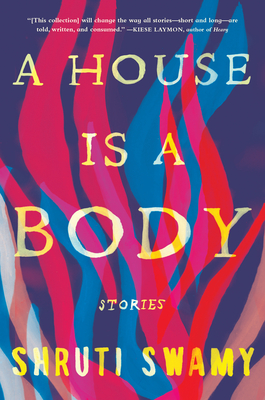
|
|
A House Is a Body: Stories
Shruti Swamy
There is an incredible solitariness to these stories and a deep understanding of the interior life of mothers and fathers and children, but most especially of mothers and wives who doubt their ability to love and be worthy of love. There is also a duplicity of time and reality where dreams and stories, past and present, conjoin and conflate. Mirrors reveal older and younger versions of the self. Parents see their younger selves in the eyes of their child. Women see their future fate in the faces of other women. Shruti Swamy seems to be telling and retelling the same story with subtle changes as if all stories are extensions of this one story. Fascinating. A terrific new literary voice worthy of celebration.
|
| |
|
|
|
|
|
Would you like to be a guest reviewer?
Email Sally at sally@beagleandwolf.com |
| |
|
|
|
|
|
— page top —
|
|



 Jen
Jen

 Sally
Sally






















